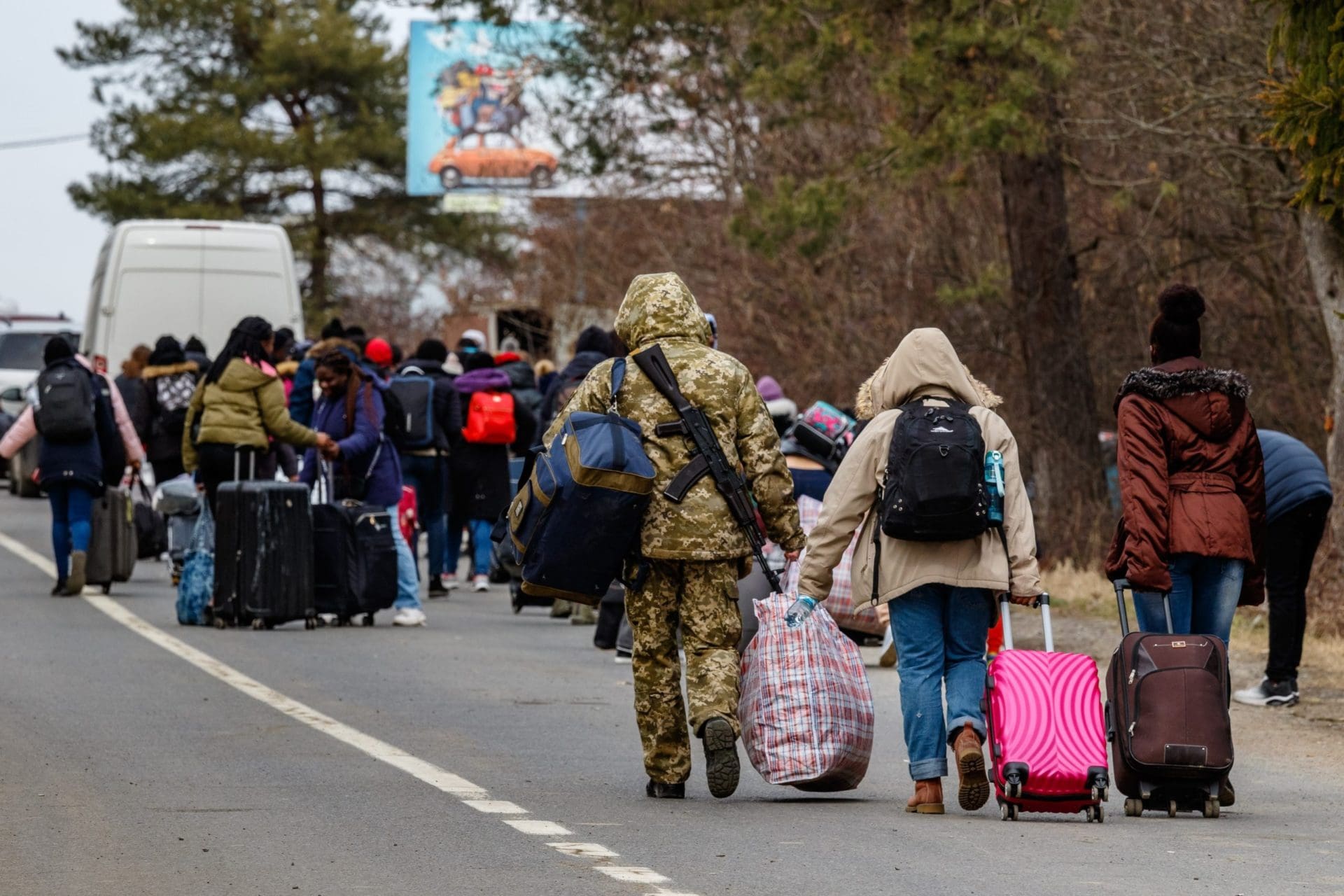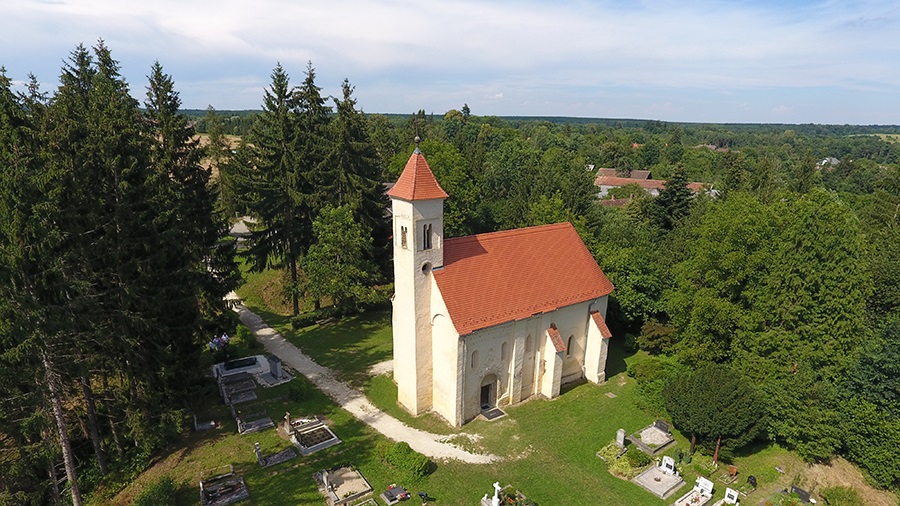As Russia’s war on Ukraine has triggered a mass exodus, Europe is likely to face its largest refugee crisis since World War II. According to the UNHCR—the United Nations’ refugee agency—around 3.5 million Ukrainians have already fled the country to neighbouring countries, including such EU members as Poland, Slovakia, Hungary and Romania.[1]UNHCR also praised these neighbouring countries for ‘showing overwhelming compassion towards the refugee’s extreme plight’ – and in fact, these countries deserve all praise for their quick and unprecedented assistance and warm welcome towards those who were forced to leave their homes.
Even if we focus only on Hungary, we see that around 450.000 refugees from Ukraine have crossed the country’s border so far, which is by far the highest influx of displaced persons to the country since the Yugoslav war. Since day one, when the first displaced Ukrainians crossed Hungary’s border, the country has stood as one to give aid in form of accommodation, food, medicine, transportation or any other assistance needed. NGOs, charities and individuals alike immediately rushed to the Hungarian-Ukraine border crossing points and at the busiest train stations near the border and in Budapest, too, to offer selfless assistance.[2] But aid cargos with food and hygiene products are also being sent from Hungary to Transcarpathia, to help those who choose to stay even despite the worsening situation in their homeland.
NGOs, charities and individuals alike immediately rushed to the Hungarian-Ukraine border crossing points to offer selfless assistance
The quick response of the Hungarian civil society is well supported by the Hungarian government with funds as well as through coordination of the work of the NGOs and church aid services.[3] But the tremendous work and efforts of the Hungarian ambulance services, police, military or the assistance of the Hungarian State Railways should not be overlooked either.
Hungary is carrying out the largest humanitarian aid operation in its history, stated Hungarian Foreign Minister Péter Szijjártó.[4] This humanitarian aid operation and acts of unselfish support by groups and individuals are likely to continue in the following weeks as well: according to government estimates, the number of Ukrainian refugees crossing into Hungary could rise to 900.000 as the war protracts.[5] For those Ukrainian refugees who choose to stay in Hungary, the government provides a year-long permit to stay and work in the country, but displaced people also have access to the Hungarian social welfare and medical systems, while Ukrainian children have the right to free of charge public education and day care in Hungary.[6]
The warm welcome and immediate helping hand Hungary gave to the Ukrainians confused or took by surprise some of the Western media. The New York Times assessed Hungary’s approach, along with that of Greece, Denmark and Poland, towards the Ukrainian refugees as a ‘striking turnabout’ considering that the country has been ‘openly hostile to refugees in the past,’ the paper suggested, referring to the 2015 European migration crisis.[7]
In 2015, 1.3 million refugees headed to Europe mainly from the Middle East and North Africa (MENA) fleeing war, poor living conditions or just in the hope of a better life. This mass migration wave proved to be an enormous security, social and economic challenge. At the time, Hungary decided to use both legal and physical barriers–such as a border fence and strict border patrolling– to secure its borders and to keep the mass waves of uncontrolled and illegal migration out of its territory. Because of the border closure system Hungary set up to defend itself (and, by the way, to protect the border of the Schengen area) it faced many condemnations from the majority of the international community denouncing Hungary as xenophobe, racist and lack of solidarity.[8]
But Hungary’s whole-hearted, selfless help for those who fled from the war in Ukraine is neither surprising nor a ‘striking turnaround’ from the country’s strict migration policy it follows since 2015. In fact, it just makes it even more pronounced. The key to understanding the Hungarian stance on refugees is to understand the difference between refugees and migrants – it is this difference that the government of Hungary has been articulating for years now.
Refugees from Ukraine arrive legally at the border crossings, in possession of official identity cards, respect the rules and protocols prescribed by the local authorities
Unfortunately, Hungarian authorities have a lot of experience with illegal migration, as just in the last year Hungarian authorities apprehended 123,000 illegal immigrants at the country’s southern border.[9] Illegal immigrants regularly breach the borders, attack police officers, behave aggressively, refuse to cooperate with the authorities and their destination and country of origin are often unknown as they arrive at the borders without any documents. As opposed to that, refugees from Ukraine arrive legally at the border crossings, in possession of official identity cards, respect the rules and protocols prescribed by the local authorities, and if necessary, stand in line for hours. (see picture below) This is what Hungarian Foreign Minister Péter Szijjártó emphasized in his speech delivered at the UN Human Rights Council last week, arguing that no parallels should be drawn between refugees from Ukraine and illegal immigrants – for the latter, Hungary’s borders remain closed, he highlighted.[10]

The ‘siege of Röszke’ at the southern border of Hungary, 2015 (24.hu, Gábor Fuszek)
In addition, the Geneva Convention or the EU’s Dublin Regulation with the so-called “first safe country” principle gave also provides legal differentiation between migrants and refugees.[11] Based on this principle, countries have the right to refuse the entry of asylum seekers who have already travelled across safe countries that could have offered them asylum protections. As soon as asylum seekers leave the first safe country, they can be regarded not as refugees, but as migrants by other countries. Therefore, it can be easily comprehended if one has some minimal knowledge of geography that while those displaced people who arrive to the southern borders of Hungary from the MENA region have obviously came from a number of safe countries, for Ukrainians, neighbouring Hungary is indeed the first safe country, with which they share an almost 140-kilometre-long border. Thus, Hungary’s migration policy in this current situation has not changed: on the contrary, it is consistent.
But of course, for those thousands of Hungarians, whether private individuals, NGO or charity services staff, who work at the borders and train stations, or those who give shelter to the refugees in their own homes, the last thing considered are international laws and obligations. These Hungarians do what they do solely out of compassion, solidarity and fraternity. They give a helping hand to those fleeing to Hungary as a first safe country, and they do so without any hesitation, from the very first day of the crisis.
Again, Hungary’s whole-hearted, selfless help offered to those who fled the war in Ukraine is neither surprising nor a ‘striking turnabout’ from the country’s strict migration policy. It is perceived as a reversal of direction only those who have fallen for the false picture some Western media have been trying to paint about Hungary for years.
[1] France 24, ‘Nearly 3.5 million Ukrainians flee the country: UN,’ (21 March 2022), france24.com, https://www.france24.com/en/live-news/20220321-nearly-3-5-million-ukrainians-flee-the-country-un, accessed 25 March 2022.
[2] France 24, ‘Helpful Hungarians rush to aid of fleeing Ukrainians,’ (27 February 2022), france24.com,
https://www.france24.com/en/live-news/20220227-helpful-hungarians-rush-to-aid-of-fleeing-ukrainians, accessed 25 March 2022.
[3] Mandiner, ‘A New York Times szerint megdöbbentő fordulat tőlünk a menekültek fogadtatása,’ (18 March 2022), mandiner.hu, https://mandiner.hu/cikk/20220318_kulfold_new_york_times_fordulat_hatar_magyarorszag_lengyelorszag, accessed 25 March 2022.
[4] Hungary Today, ‘War in Ukraine: Over 200,000 Refugees Arrive to Date,’ (10 March 2022), hungarytoday.hu, https://hungarytoday.hu/ukraine-war-russia-200000-refugees-asylum-arrive-hungary/, accessed 25 March 2022.
[5] Portfolio, ‘Lapértesülések szerint 900 ezer ukrán menekülttel számol a kormány,’ (16 March 2022), portfolio.hu, https://www.portfolio.hu/global/20220316/lapertesulesek-szerint-900-ezer-ukran-menekulttel-szamol-a-kormany-533629, accessed 25 March 2022.
[6] Lili Zemplényi, ‘Ukrainian Refugees and Hungary’s Response to the War in Ukraine,’ (17 March 2022), hungarianconservative.com, https://www.hungarianconservative.com/articles/current/ukrainian-refugees-and-hungarys-response-to-the-war-in-ukraine, accessed 26 March 2022.
[7] Niki Kitsantonis, Christina Anderson, Emma Bubola, ‘Countries previously hostile to refugees embrace Ukrainians,’ (17 March 2022), nytimes.com, https://www.nytimes.com/2022/03/17/world/europe/europe-countries-refugees-embrace-ukrainians.html, accessed 26 March 2022.
[8] Jennifer Rankin, ‘Hungary accused of fuelling xenophobia with anti-migrant rhetoric,’ (21 May 2019), theguardian.com, https://www.theguardian.com/world/2019/may/21/hungary-accused-of-fuelling-xenophobia-human-rights-violations, accessed 25 March 2022.
[9] Hungary Today, ‘FM Szijjártó to UN Human Rights Council: Hungary Accepts Ukraine Refugees but Rejects IIlegal Immigrants,’ (23 March 2022), hungarytoday.hu, https://hungarytoday.hu/szijjarto-un-human-rights-council-ukraine-refugees/, accessed 26 March 2022.
[10] Benjamin Bathke, ‘Hungary welcomes those fleeing Ukraine but not ‘illegal migrants’’, (3 March 2022), infomigrants.net, 3 March 2022), https://www.infomigrants.net/en/post/38928/hungary-welcomes-those-fleeing-ukraine-but-not-illegal-migrants, accessed 24 March 2022.
[11] European Commission, ‘Migration and Home Affairs – Policies: Country responsible for asylum application (Dublin Regulation),’ (23 September 2020), Ec.europa.eu, https://ec.europa.eu/home-affairs/policies/migration-and-asylum/common-european-asylum-system/country-responsible-asylum-application-dublin-regulation_en, accessed 25 March 2022.








